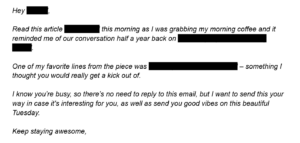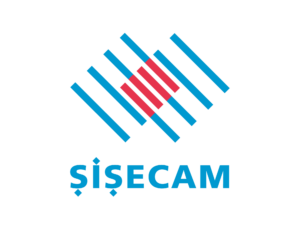Wenn es um den Schutz geistigen Eigentums geht, ist das Internet so etwas wie der Wilde Westen der digitalen Welt. Sobald Sie eine Datei digitalisieren und außerhalb der Sicherheit Ihres Computersystems senden, öffnen Sie Ihr Eigentum für betrügerische Akteure, die Ihre Ideen stehlen und zu ihrem Vorteil nutzen könnten.
Die Lösung, um die Kontrolle über Ihr geistiges Eigentum beim Senden von Dateien zu behalten, ist die seit langem verfügbare, aber wenig genutzte Verwaltung digitaler Rechte (DRM).
DRM reicht von einfachen Maßnahmen (z. B. schreibgeschützte PDFs) bis hin zu komplexen Lösungen (z. B. die Installation einer speziellen Software durch den Empfänger für den Zugriff auf Dateien).
Diese traditionellen Methoden haben jedoch das Wachstum und die Nutzung von DRM zum Schutz geistigen Eigentums behindert. Sie waren entweder zu simpel und konnten Diebstahl nicht verhindern oder so komplex, dass sich die Empfänger beim Versuch, auf die Dateien zuzugreifen, belästigt fühlten.
Glücklicherweise haben die jüngsten Entwicklungen im Bereich DRM den Prozess einfacher, effektiver und wirtschaftlicher gemacht. DRM ist nun für kleine, mittlere und große Unternehmen verfügbar, die Dateien senden müssen, ohne die Kontrolle zu verlieren.
Nun stellt sich die Frage: Wie finden Sie die richtige DRM für Ihre Anforderungen?
7 Dinge, die Sie bei der Auswahl Ihrer DRM beachten sollten
1. Welche Art von Inhalten möchten Sie schützen?
Möchten Sie Schulungshandbücher, eBooks, Angebote, Videos und Bilder schützen? Liegen Ihre Dateien in einem einzigen Format vor? Möchten Sie PDFs zwischen Kollegen austauschen? Verkaufen Sie eBooks an die Öffentlichkeit? Verschenken Sie Whitepaper an potenzielle Kunden entlang Ihres Verkaufstrichters? Versenden Sie Schulungshandbücher und Videos an Ihre Kunden?
All diese Verwendungszwecke bergen ein potenzielles Risiko für Ihr Unternehmen, wenn die Dateien in die falschen Hände geraten.
Einige Lösungen, insbesondere kostenlose DRM-Programme, schützen nur einen einzigen Dateityp, beispielsweise PDF. Robustere Systeme schützen eine Vielzahl von Dateiformaten wie PDF, Excel, Video, Bild- und Audioformate.
2. Welches Schutzniveau ist erforderlich?
Wie viel Kontrolle möchten Sie über Ihre Dateien haben? Reicht es Ihnen, wenn Sie nur die Möglichkeit der Benutzer zum Herunterladen, Drucken und Kopieren von PDF-Dateien einschränken? Wenn ja, könnte eine herkömmliche DRM-Software Ihren Anforderungen entsprechen.
Wenn Sie mehr benötigen, stellen Sie sich folgende Fragen: Wäre es für Ihr Unternehmen von Vorteil, die Aktivitäten der Benutzer mit Statistiken zu verfolgen (wer hat Ihre Dateien aufgerufen, wie lange und von wo aus)? Ist es wichtig, dass Ihre Empfänger den Zugangsvoraussetzungen zustimmen (ähnlich einer Geheimhaltungsvereinbarung)?
Eine typische DRM-Lösung verfügt nicht über solche Funktionen, aber moderne DRM-Lösungen bieten eine integrierte Komplettlösung, die Ihre Dokumente schützt und Ihnen wertvolle Daten darüber liefert, wie andere mit Ihren Dateien umgehen.
3. Wer ist die Zielgruppe?
An wen müssen Sie Ihr geistiges Eigentum senden? Werden Sie Dateien nur zwischen Mitarbeitern hin- und herschicken? Werden Sie vertrauliche Informationen an Ihren Vorstand oder potenzielle Investoren senden? Verkaufen Sie Ihre Produkte über eBooks oder Schulungshandbücher?
Für jedes dieser Szenarien könnte eine andere Art von DRM besser geeignet sein. Beispielsweise könnte die Freigabe nur für Mitarbeiter durch eine Vor-Ort-Lösung mit Software erfolgen, die über Ihr geschütztes Netzwerk funktioniert. Schließlich sind die Mitarbeiter daran gewöhnt, mit den Softwaresystemen des Unternehmens zu arbeiten, und würden durch eine weitere Software nicht belastet. Ein solcher Dienst kann jedoch den Zugriff auf Dateien einschränken, da diese innerhalb des Netzwerksystems verbleiben müssen.
Wenn Sie Dateien an externe Parteien wie Direktoren, Investoren und/oder Kunden senden, wird von Ihnen erwartet, dass Sie ein System bereitstellen, mit dem diese von verschiedenen Standorten und über eine Vielzahl von Geräten auf die Dateien zugreifen können. Außerdem müssen Sie kontrollieren, ob sie über ungesicherte Netzwerke auf Ihre Dateien zugreifen.
4. Benutzererfahrung
Überlegen Sie, wie Ihre Zielgruppe Ihre DRM-Lösung erleben wird. Interne Mitarbeiter werden sich nicht so sehr an einem komplexen System stören, dessen Nutzung zusätzliche Schritte erfordert.
Wenn Sie jedoch externen Parteien Zugriff gewähren, ist die Benutzerfreundlichkeit ein wichtiger Faktor. Einige Kunden oder Investoren könnten zögern, wenn sie eine weitere Software oder App herunterladen müssen, um auf Ihre Dateien zugreifen zu können. In diesem Fall wäre eine DRM-Software, die auf einer Vielzahl von Geräten funktioniert und keine Installation erfordert, sicherlich ideal.
5. IT-Umgebung der Endbenutzer
Die Wahl der richtigen DRM-Lösung hängt auch von der IT-Umgebung des Absenders und des Empfängers ab. Würde ein internes System Sie und Ihre Mitarbeiter bei der Erstellung und Verwaltung von Dateien zusätzlich belasten?
Würden Ihre Empfänger zögern, eine weitere App oder Software herunterzuladen, um auf Ihre Dateien zugreifen zu können? Es gibt viele Variablen, da es ihnen möglicherweise sogar untersagt ist, Software auf ihrem Unternehmensrechner herunterzuladen.
6. Selbst gehostet oder Cloud?
Möchten Sie die Lösung selbst hosten oder einfach aus der Cloud beziehen? Sind Sie und Ihre Mitarbeiter bereit, eine weitere Software zu installieren, zu warten und zu unterstützen? Wie oft können sie ein Upgrade durchführen?
Alternativ würden einige ein cloudbasiertes System bevorzugen, bei dem all diese Details stattdessen vom technischen Personal Ihres Anbieters übernommen werden.
7. Wie hoch ist Ihr Budget?
Obwohl dies der letzte Punkt ist, den es zu klären gilt, ist er sicherlich nicht der unwichtigste. Das Budget, das Sie für eine DRM-Lösung bereitstellen können, ist unglaublich wichtig.








